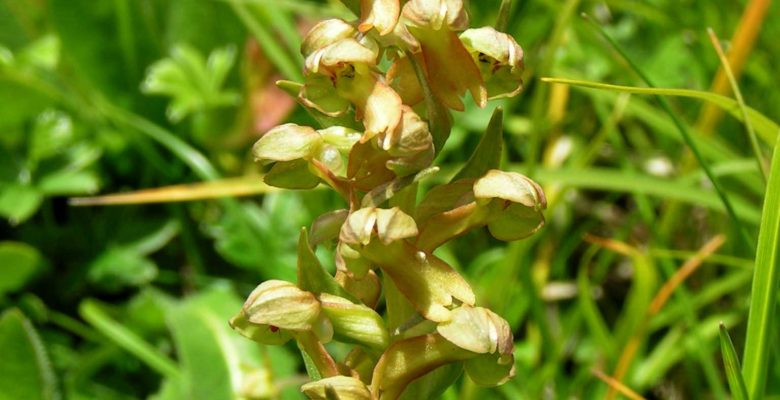Long Bracted Green Orchid
Sorry folks, our “Long Bracted Green Orchid”, Coeloglossum viride, has been moved to the genus Dactylorhiza. It’s a long and involved story, and I can only give the briefest sketch here.
The Josselyn Botanical Society came across a nice specimen in Albany, Maine this July, spotted by our own Dianne Allen. We all recorded it as Coeloglossum, but Arthur Haines said no, it is Dactylorhiza. He is currently writing “The Botany of New England” and is up to date on the family Orchidaciae. DNA evidence forced its placement into Dactylorhiza. (A. M. Pridgeon et. al. 1997)
This is one of a very complex group of orchids that freely hybridize in nature, with 15 genera participating in the miscegenation. The group is heavily represented in Eurasia, where the DNA work was done. The species themselves tend to be variable across their ranges and hard to define. Our North American D. viride have very long bracts (floral leaves) but vary in other details across their range throughout temperate North America.
They flower from May 15 to August 15, live in rich mesic woods, and can be encountered everywhere in our area as “occasional” in occurance. At first glance it could be mistaken for Epipactis heleborine or Platanthera aquilonis. Keep your eye out for it, for it has reached “celebrity” status.
Many fine images of it can be found on Google under Coeloglossum viride. My local artist who does my sketches is currently unavailable, no sketch can be provided.
(An example: http://www.plant-identification.co.uk/skye/orchidaceae/coeloglossum-viride.html )
— John A. Mattor
Photo: CC BY-SA 3.0

